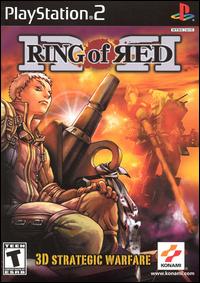In Collection
#311
Completed:
No
#311
Completed:
No
| Publisher | Konami |
| Developer | KCE Studios |
The flames of World War II have died down, but in Ring of Red's alternate timeline, the coals of battle are still scorching hot on the island nation of Japan. After having been divided in half between the communist sensibilities of the Eastern Block and the democratic West. This tension ultimately leads to another war, one that lasts four years and is only quelled through minimal and unsatisfactory means. All the while, technology has been increasing by leaps and bounds, ultimately leading Japan to be peppered with battle-ready mechs as both sides slip closer and closer toward an inevitable and ultimate conflict. The year is now 1964, and that conflict has been sparked by the theft of a new mech prototype from Allied forces. You're in charge of getting it back and saving any hope of the good guys winning this one. Ring of Red and its alternate timeline of mid-20th century Japan brings a hybrid of turn-based and real-time strategy action to the PlayStation 2. The game focuses on the AFWs (Armored Fighting Walkers) that every Japanese platoon uses, regardless of what side they are on in the war. But don't think Gundam, Robotech, or any other high-concept, sleek vision of mechs. These lumbering giants are gas-powered, dirty, and downright crude, as Konami has attempted to keep with the setting of the time period in which the story takes place. The AFWs are around for one reason: to level whatever gets in their path. Players will take on the role of the regiment assigned to get the prototype AFW back, engaging in over 20 battle sequences as they make their way through the game. These battles are broken up into two distinct portions. First, there is the tactical end of the game, where players will position their AFWs and the various support units in an attempt to get the best strategic advantage. After this is done, it's on to the real-time portion of the battle. In this portion, players will be maneuvering and aiming with the mechs while the support troops take care of backup. Each battle contains multiple instances of switching between turn-based and real-time play, and many of these missions can become quite lengthy, clocking in at over two hours.
|
|
||||||||||||||||||||||||
